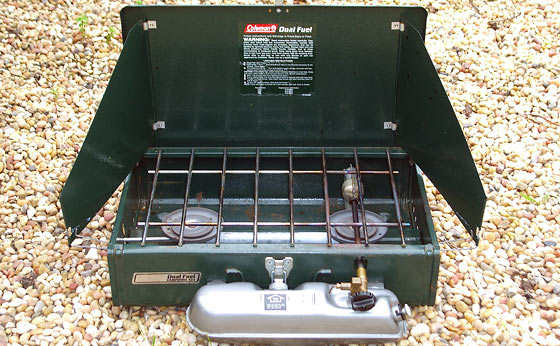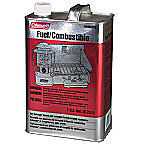How to Cook Without Electricity
If the power goes out (grid down) and the electricity is off for a period of time, you will need an alternative method of cooking without electricity.
Even if your kitchen has a gas stove, it likely requires electricity to operate. So, it’s best to consider multiple alternative ways to cook. Note, regarding a typical gas stove… I have one (fueled from a buried liquid propane tank in the yard). I am able to light the stove top burners without electricity. However the oven’s ignitor requires electricity to operate (just pointing that out).
UPDATE (2022) Original post date (2014). I read a comment in the Open Forum this morning. It was about storing plenty of spices and such – for use with the most commonly stored long-term food staples (rice and beans). That’s a great idea. Many preparedness-minded folks have these foods stored away for a catastrophic emergency. However, it struck me once again, as follows… You may likely find yourself without electricity upon a disastrous scenario whereby you may need to dig into your food supplies (e.g. rice & beans). So, you better consider ways to cook this stuff without electricity!
Here are a few ideas how to cook without electricity:
Grate over a wood fire
One obvious cooking alternative is by way of a wood fire. Perhaps with a cooking grate placed over it supported by logs, stones, bricks, etc. A fire pit in the yard, for example. Got wood?
Rocket stove
A ‘rocket stove’ is a very efficient way of utilizing a fire. It’s a method that uses little firewood (even twigs) to create a hot burning fire. There are several popular rocket stove varieties available. You can even build one with bricks. I happen to have a small ‘solo stove’ (as well as a fire pit in the yard).
Solo Stove
(amzn)
Dutch oven
A Dutch oven cooker. You can hang it on a tripod over an outdoor fire. I have (this tripod). Or you can place it directly in a bed of hot coals (or hot coals on top of the Dutch oven’s cover). Maybe even in your fireplace if you have one. Good Dutch ovens are made of cast iron (they retain heat longer).
My Dutch Oven
(amzn)
BBQ grill
Your barbecue grill is a likely option for cooking without electricity. At least until you run out of propane fuel. You might keep an extra propane tank (filled). I happen to have four 20-lb tanks, and two 30-lb tanks that go with my camper (I barbeque a lot). If you use charcoal, when it goes on sale buy extra bags. NEVER cook indoors with a bbq grill (should go without saying)…
Solar oven
A solar oven can be very effective during the summer months. That is, during days when there are few clouds and not a lot of wind (which may mess with the reflector panels). Therefore, this will be a limited use option. Nonetheless a solar oven is yet another alternative method of cooking without electricity. Your geographical location, weather, season, and the efficiency of the solar oven will affect your overall success.
Solar Oven Cookers
(amzn)
Sterno
‘Sterno’ heat (canned heat) like those which are used by caterers – may be used indoors and are effective for cooking. The canisters contain an alcohol-based ‘gel’ fuel – which does not spill and will burn for a few hours. You will need some sort of stand to hold your cooking pot over the canister.
Sterno Stove Kit
(amzn)
Butane stove
A good choice for safer cooking indoors without electricity is a single burner butane stove. Butane burns very clean. This type of stove is widely used by the Asian culture. My recommendation would be any of the Iwatani stoves…
Camp stove
There are all sorts of camping stoves which will enable cooking without electricity. Some of them are fueled from small butane canisters. Many others use propane, and still others by liquid fuel (e.g. Coleman white gas).
Be wary of the dangers of carbon monoxide. Unless your specific camp stove indicates that it is safe to cook indoors – assume that it is not. Maybe use it in the garage, with the garage door open (for example).
Coleman stove
One popular camp stove which has been around ‘forever’ is the Coleman camp stove. I have had two of their dual burner liquid fuel stoves during the past 20 years, and have been very happy with them. They seem to be built to last.
Coleman 2-Burner Dual Fuel Stove
Coleman 2-Burner Propane Stove
I tend to use the liquid fuel model. It seems a bit more rugged. It holds larger pots without issue, and will heat up very quickly. I’ve simply been familiar with it for many years. I like the sound of the burners on that stove (unique!). I believe that liquid fuel may be more practical when it comes to storage space versus the propane canisters. You will get far more cook time from a gallon can of white fuel versus an equivalent size cans of propane fuel (for example).
Coleman fuel – White gas
White gas‘ is a special Coleman blend which is orderless, has rust inhibitor in it, and is available in one gallon cans at nearly every store that sells camping supplies.
Although the Coleman white gas fuel has a supposed shelf life, i’ve used it far beyond a supposed expiration. I’ve had zero problems (as in, 10 years!).
Coleman dual fuel stove
According to Coleman documentation, you can even use unleaded gasoline in their dual-fuel model stove as a substitute for their Coleman fuel white gas. I have not tried this (just seems a bit scary to me). But it is good to know of an alternative fuel source.
A one gallon can of Coleman fuel will provide quite a lot of cooking time. And may be well worth stocking several, or more, in your survival preps if you have this type of stove.
I’ve even read comments reporting no problems or issues with the fuel even after 15 years, as long as the screw top is secured. Just remember to use their Coleman filtering funnel (view on amzn) as it is poured into the tank, in case of sediment. Unleaded gasoline however will not store well for that long. And I recommend adding a fuel stabilizer additive such as PRI-G or STA-BIL if it will be stored beyond several months.
During emergency cooking without electricity, be aware of safety considerations – especially since this is not your normal way of cooking. Consider ventilation, the dangers of fuels, and the dangers of fire itself.
Any other ideas out there for cooking without electricity?
[ Read: How Much Coleman Fuel Do I Need? ]
[ Read: Best Butane Stove For Indoor Use ]


